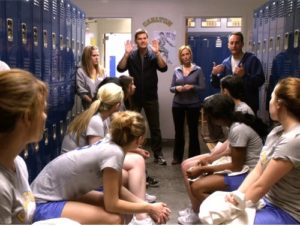Implementation intentions lighten the load on your brain to pursue goals more reliably; it boosts your chances of success, research has found, by 300%. ~Caroline Webb
 Over the course of more than 20 years of consulting, I can confidently state that most leaders have goals. However, I can also state that not nearly as many leaders (or their organizations) have implementation intentions.
Over the course of more than 20 years of consulting, I can confidently state that most leaders have goals. However, I can also state that not nearly as many leaders (or their organizations) have implementation intentions.
Implementation intentions are very specific statements about what we’ll do and when we’ll do it. Here’s an example of a leader’s personal goal: I’m going help my team be more collaborative. That’s a goal. Implementation intentions might sound more like this: When anyone on my team raises issues in our meeting today, I’ll pause and listen to understand, then ask questions to find out more. The second is not only more tangible, it’s also easier to imagine achieving.
Caroline Webb, author of How to Have a Good Day, calls this the “when-then” rule. It states when X happens, then I will do Y. Scientists know this as implementation intention. It actually takes much less effort for our brains to handle an implementation intention than it does something more abstract like “be more collaborative.”
According to Heidi Grant Halvorson, at Columbia’s Motivation Science Center, setting implementation intentions makes people as much as three times more likely to achieve their goals.
I believe the concept of implementation intentions not only applies to personal goals, but also applies to departmental or organizational goals. I just gave myself a test. I did a random online search for a goal of “financial strength.” This is a very common, but vague, goal for many organizations. Below is the actual goal I discovered for a large state university. Then I created an implementation intention using the “when-then” rule to demonstrate the difference.
Actual Goal: We will operate from a position of financial strength by becoming as efficient as possible in our spending and maximizing resource generation.
My Implementation Intention: When funding levels drop to 105% of baseline expense budgeting in academic and administrative program reviews, then a financial performance improvement taskforce will be appointed to bring the program back into alignment with a margin greater than 5%.
You tell me, which one is more tangible and would be easier to imagine achieving?
In this example, to me, the goal says generate as much money as you can and try to keep your expenses low. The implementation intention gives specific definition as to what that really means, and identifies when and what type of action will be taken to ensure the goal is achieved.
Goals are great, but intentions are even better!
What’s one implementation intention you will achieve this week?



